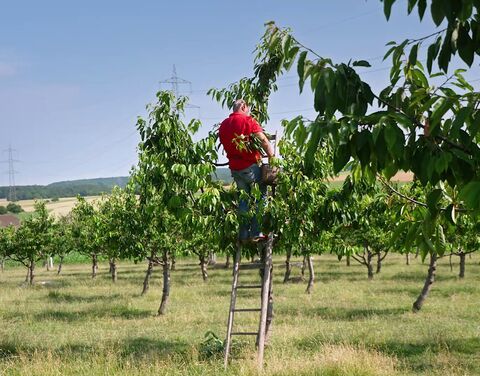
As more and more standard-size fruit trees disappear, so do the valuable biodiverse habitats they provide. Existing orchards with these majestic trees can also help boost biodiversity. As part of our Flora Futura sustainability initiative, AXA is assisting growers in making ecological improvements to their tall-growing tree orchards.
Stately apple, cherry and pear trees are a quintessential feature of the Swiss countryside. But these orchards are disappearing at an alarming rate. Whereas these trees numbered 15 million some 70 years ago, only 2.3 million still exist today. The reason for this is because today’s fruit growers are planting dwarf trees instead since they are less time and labor intensive.
But standard-size trees are vital both for the climate and for biodiversity – especially when the orchard provides a multi-layered ecosystem with a rich structural habitat. When done right, the area around the orchard and the understory provide a unique habitat for plants, insects, birds and small animals.
AXA is helping growers improve their existing standard-tree orchards using ecological principles, e.g. by adding natural or artificial nesting holes or other structural habitats such as piles of branches, wild hedgerows, open ground, dry-stone walls, stone piles and biotopes.
In a pilot project, experts tested the usefulness of such improvements and used the findings to develop a targeted concept. With AXA’s support, this concept will be made available to various fruit growers.
One such grower is Toni Gass in Oltingen in the canton of Basel-Land. He decided to go back to growing standard-size fruit trees. Watch our video to find out why he made this choice and how these majestic trees contribute to biodiversity.